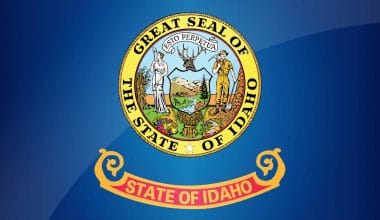Investment is good for everyone and not just for those who are done with their schooling. While those who are employed are saving for their retirement, you too can save for your retirement as a student with the 401k plan. Learn how to set up your own 401k plan while still a college student without an employer.
While several people may think it unwise to bother yourself about a retirement plan as a student, we don’t think it so.
If these people can agree that you don’t need to get out of school before you start thinking and laying down investment, then why segregate the kind of investment you should go into?
The 401k plan is mostly for employees who have active employment under an employer.
Their employer sees it wise to get them started for their future, hence the plan. However, because a wonderful future is good for everyone and not just a selected few, there are 401k plans for individuals who aren’t working for an employer.
As a college student, if you do freelance jobs, are an independent contractor, or have a one-person outfit, then you can set up your own 401k plan.
Although this may not be so easy to set up, this post will not only break down the setup process for you but also expose everything you need to know about the 401k retirement account.
Here is the content of this article:
Table of contents
- What is the 401k Plan?
- Who is Eligible for a 401k Plan?
- What are the Types of 401k Plans?
- How Does a 401k Plan Work?
- Important Guidelines for Operating a 401k Account
- How Do I Set Up a 401k Without an Employer?
- What are the Eligibility Requirements for Starting a Solo 401k?
- What are the Benefits of the Solo 401k?
- Things You Must Know Before You Set Up your 401k
- How to Set Up Most Kinds of 401k Plan
- Popular Solo 401k Vendors
- FAQs on Setting Up Your Own 401k
- Conclusion
- References
- We Also Recommend
What is the 401k Plan?
The best way to understand a 401k is to see it as one of the retirement plans available for US citizens. The 401k plan is a contribution retirement account that involves employees contributing a certain sum of money through their payroll withholding.
Their employers offer them the 401k plan and may as well match some or all of the employees’ contributions. While the IRS can tax your 401k investment, you won’t be taxed while contributing to a traditional 401k plan until you withdraw the money, which is usually after retirement.
However, in a Roth 401k plan, another kind of 401k plan your withdrawals after retirement can be tax-free. Whichever is the case, the 401k plan has special tax benefits under IRS guidelines.
Here are features you shouldn’t forget about the 401k plan:
- It allows you to invest a portion of your salary, up to an annual limit.
- Your employer can choose to either match some part of your contribution or not.
- The money in your 401k account will be invested for your retirement, usually in a variety of mutual funds chosen by you.
- It is almost impossible to withdraw any of the money in your 401k account without a tax penalty until you’re 59½ years old.
Who is Eligible for a 401k Plan?
From the above, you can deduce that the 401k plan is mainly an Employer-employee kind of retirement agreement. This means that you must be employed by an employer to enjoy the benefits of the 401k plan, right?
This is mostly true, but because the 401k plan is quite radical, it stands as a retirement plan that people who don’t have retirement account options in their workplace can take. Hence, you can set up your own 401k or similar retirement savings program through any of the following routes:
- As an employer, self-employed individual, or benefits manager who wants to set up a 401k plan for your business, or
- As an employee of a company that doesn’t currently offer a retirement plan
Do you see in the option where it says college students can set up their own 401k account? Not explicitly.
The self-employed category can cover you as a student still in college, because as a college student, you may be taking freelance jobs in which you can invest some of the earnings into a 401k account.
You can also own your one-man outfit as a student, which makes you both an employer and an employee. Hence, you are also eligible to set up a 401k account. But whichever is the case, you must be at least 21 years of age to be able to set up a 401k account.
Looking for freelance jobs as a student? Here are 15 Flexible Part-time Jobs You Can Do From Any Location
What are the Types of 401k Plans?
While the major kinds of 401k plans are the Traditional 401k and the Roth 401k, there are several other kinds of 401k plans, each with its different setup process and governing rules.
Here are the seven kinds of 401k plans you can invest in:
1. Traditional 401k
The traditional 401k is a kind of retirement plan that the employer sponsors that gives multiple investment options to employees. In a traditional 410(k) plan, the contributions from the employee and any earnings from the investment are tax-deferred.
This means that the employees are only taxed income taxes when they withdraw their savings. Since it is an employer-sponsored plan, some employers match a portion of the employees’ 401k contributions to provide additional benefits to their employees.
The income taxes on these employer matching funds are also tax-deferred as well. The traditional 401k derived its name from being the mostly used 401k plan by employers.
2. Roth 401k
This is the second most popular kind of 401k account. It is also employer-sponsored like the traditional 401k plan but with one major exception.
The exception is that employee contributions towards a Roth 401k account are not tax-deferred but are made with after-tax dollars. However, the income the employee earns from the Roth account in the form of interest, capital gains, or dividends is tax-free.
Employees who believe they would be in the higher tax bracket when they retire as well as younger employees and high-earners are the ones that benefit most from the Roth 401k plan.
3. Solo 401k/Self Employed 401k
The solo or Self-employed 401k plan is the kind of retirement plan suitable for you as a college student.
But before we further explain how, the Solo 401k is a qualified retirement account tailored for employers who have no full-time employees apart from their spouses and partners.
This type of 401k retirement account also goes by the names Individual 401k, Self Employed 401k, and Solo-K.
Here, the employer is both the employer and the employee, which allows the individual to make contributions both as an employer and as an employee. This way, they can maximize their retirement contributions and business deductions.
Because the Solo 401k covers only the business owner(s) and their spouse(s) and partners, it is not subjected to the complex ERISA (Employee Retirement Income Security Act of 1974) rules.
The ERISA rules set minimum standards that restrict employer pension plans with non-owner employees. In the Solo 401k plan, all contributions you make as an “employer” are tax-deductible to your business while the earnings from the 401k account grow tax-deferred until withdrawn.
4. Safe Harbor 401k
The Safe Harbor plan is a special kind of 401k retirement plan. It automatically passes the non-discrimination test and requires companies to make contributions to their employee’s 401k plan.
In return for satisfying this requirement, the IRS rewards employers who have taken a step to increase their employee participation with “safe harbor.” The safe harbor covers the employers from both the non-discrimination test and the consequences of failure.
5. Simple 401k
The simple 401k plan is also for self-employed business owners. However, it is for business owners or self-employed professionals with less than 100 employees. This 401k plan combines the features of a traditional 401k with the simplicity of a SIMPLE IRA, hence its name.
Because the 401k plan is a stripped-down version of a traditional 401k plan, it is a cost-effective and efficient way to offer benefits to employees.
However, employees that participate in a SIMPLE 401k plan cannot receive accruals or contributions with any other employer-sponsored retirement plan because the employer contributions are fully vested.
6. Profit-Sharing Plans
The profit-sharing 401k plan is also a contribution-retirement plan, only that is more defined. The Profit-Sharing plan gives employers the flexibility to design the key plan features of the 401k plan, with the financial well-being of their employees in mind.
This flexibility option makes the Profit-sharing 401k plan ideal for businesses of any size. Where it mostly differs from other 401k plans is that the employer contributions in the Profit-Sharing plan are discretionary.
This entails that the company can choose not to make contributions to the plan if it is not making a profit.
7. 403(b)
It may be quite confusing how 403(b) by the name looks like a different plan but it is not. The 403(b) plan is the kind of 401k plan that is ideal for specific employees of tax-exempt charities, public schools, and churches.
Therefore, eligible participants of the 403(b) plan include school administrators, teachers, government employees, professors, doctors, nurses, and librarians. A 403(b) plan is not much different from a traditional 401k plan. It allows the employees to defer a part of their salary into the retirement fund.
While this deferred salary is typically exempted from income taxes, the distributions are taxed. The 403(b) plans also offer Roth account features in that the IRS taxes the employee’s salary contributions, while their distributions are tax-free.
Meanwhile, like the traditional 401k plan, the employers in the 403(b) plans can choose whether or not to contribute to the plan. Also, with the 403(b) plan, you can invest in either mutual funds or annuities.
While you get started with your 401k plan as a student, here are the Top 10 things that should be in my budget as a student
How Does a 401k Plan Work?
Again, we will remind you that a 401k plan is a qualified retirement plan that allows eligible employees of a company to save and invest for their own retirement on a tax-deferred basis. By this, only an employer can sponsor a 401k for their employees.
On your part as an employee, you decide how much money you want your employer to deduct from your paycheck and deposit to the plan based on IRS limits and rules. To increase your benefit, your employer may also choose to make contributions to the plan. However, this is optional.
The employer is the sponsor of the plan, therefore, it is their responsibility to run the plan in accordance with the law, rules, and regulations, and provisions of the plan itself.
Thus, the employer will decide who is eligible for the plan, how much and when they can contribute, how much he or she (the employer) will contribute to the plan, what investment options you the employee will have, and how often you can reallocate your investment assets.
The employer will also take care of hiring the vendors necessary to run the plan, as well as decide what features the plan will have (will loans be allowed, will hardship withdrawals be allowed, etc.).
In companies where employers are willing to set up a 401k plan for their employees, it is not mandatory. Thus, it is your responsibility to decide if you want to participate in the 401k plan or not, and how much you will contribute each pay period if you wish to participate.
For example, if you earn $1000 each pay period and choose to defer 5% of your pay, $50 is taken from your monthly pay and placed in the 401k plan.
Important Guidelines for Operating a 401k Account
Don’t postpone participating in 401k, even if you think you can’t afford it. So long as you want a beautiful retirement, the sooner you start contributing, the better off you are going to be in retirement.
This is why we encourage college students to start a 401k plan. No matter how small you set aside from your earnings, say one or two percent, it will make a big difference.
A 401k is a retirement plan and not a savings account. So, the money you place in a 401k will not be easy to access in an emergency. While some plans allow loans and hardship withdrawals, the rules governing such 401k plans are restrictive.
Your 401k plan sponsor, that is, your employer, should provide you with a Summary Plan Description.
Request for it if your employer doesn’t provide you with one and read it! It contains a lot of good information regarding the working of the plan, what options are available to you, who the trustees are, and other important information. You can always ask for another Summary Plan Description if you misplace your copy.
Because you are the only person who has your own full interest at heart, it is up to you to ensure that you know what your plan is all about and how to take full advantage of it.
So you have to adequately educate yourself on the 401k plan. Go to all educational opportunities that your employer offers. Read all the material your employer provides on the 401k plan and ask questions where you don’t understand something.
How Do I Set Up a 401k Without an Employer?
As a college student, you’re already wondering by now how you can set up a 401k account as you aren’t employed yet.
There are ways you can go about starting a 401k plan, but if you do have active part-time employment and your employer is not offering a 401k plan, you can ask them to provide you with one.
If that is not your case, however, here’s how to circumvent starting your own 401k without an employer:
Step 1. Get a Side Job
You must have income coming in to start a 401k plan. Get a side job while in college so that you can be able to set up a 401k with the income.
If you are self-employed as a student, you can also use your self-employment income to set up a Solo 401k also known as the one-person 401k plan.
By self-employment, we mean that you should be actively earning income from jobs like walking dogs, freelancing, and consulting gigs.
These are jobs you can do as a college student that will qualify you to set up a 401k account, and you may decide to save up to 100% of your net earnings. There is a limit to the amount you can contribute though, but it will help you make a nice dent in your retirement savings.
You need a good resume to get a part-time side job. Here are Killer Part-time Job Resumes For College Students | Samples & Writing Tips
Step 2. Save in taxable accounts:
One option available for you as a student who can’t start a 401k account is to save in Annual Individual Retirement Account (IRA). But annual IRA limits restrict you from making substantial contributions toward a comfortable retirement.
So, if you’ve reached the IRA limit and you want to save more, you can always save in a normal “taxable” account.
Although these non-retirement accounts won’t provide you with enough tax benefits, they are better than not saving at all. And the plus is that at some point, you may be able to shift funds from these accounts into retirement accounts.
That is to say that if you are done with college and start working and your employer decides to sets up a 401k plan, you can move these savings to your account. It is the same if you decide to start your own business.
From the above, it is clear that as a college student with a side job, you can actually set up a Solo 401k account, especially if you are 21 years of age or above. Now, let’s explore the eligibility requirements for setting up a Solo 401k account as a student.
What are the Eligibility Requirements for Starting a Solo 401k?
In order to invest in a solo 401k, you must meet the following requirements.
One is that you, and not an employer, are responsible for your income. This thus means that sole proprietors, small business owners without employees, independent contractors, and freelancers are eligible. If you are a small business owner without employees, your spouses can also contribute to the 401k account if they work for the business.
Two is that you must have earned income that can be verified through tax records.
Once you meet these criteria, it doesn’t matter whether you’re a college student, you can open a solo 401k plan.
What are the Benefits of the Solo 401k?
While the Solo 401k plan is different from the well-known traditional 401k plan it also has its own benefits that can be better than other types of retirement accounts.
One of these benefits which set the Solo 410(k) apart from other retirement plans is its contribution limits. The Solo 410(k) plan has the highest contribution limit among retirement plans. This is because, like an employer-sponsored 401k, Solo 410(k) accepts contributions from the employee and employer. Hence, you can act as both and make contributions in both roles.
As such, as an employee, you can contribute $19,000 as of 2019 and up to $19,500 in 2024 If you are 50 or older, you can make an additional catch-up contribution of $6,000 as of 2019 and $6,500 in 2024, according to Investopedia.
Now, playing the employer role, you can contribute up to 25% of your compensation. The total contribution limit for a solo 401k was $56,000 in 2019 and $57,000 in 2024.
Again, you can make an additional $6,000 catch-up contribution if you’re 50 and over as of 2019 and up to $6,500 in 2024.
Another benefit of the 401k plan is that it offers you the ability to choose between a traditional and Roth plan feature. In other words, you can choose a plan with the tax advantage that works best for you.
Another benefit is that the Solo 401k allows you to take loans from the plan, which is something you don’t get from IRAs, the substitute retirement plan for small business owners.
Even though no one will advise you to borrow from your retirement fund, having the option to take a loan from it is quite refreshing.
Things You Must Know Before You Set Up your 401k
Now you’ve decided to start up a 401k plan as a student, here are individual components of your plan. The list is more extensive than what we have here, but in most cases, a company can provide you with a good number of these services.
The Plan Document
This is a legal document containing the rules of your 401k plan. It defines specific terms and provides a roadmap for questions that come up when administering the plan. Since this document is very long, employees receive a shorter version of it referees to as the Summary Plan Description (SPD).
The Adoption Agreement
This is the document that you use to establish your 401k plan. It allows you to customize the plan so it fits your and your organization’s goals. It houses questions with checkboxes like: Do you want to allow loans — yes or no? Is there a match? What kind? Which vesting schedule do you want to use? Etc.
The Trust
This is a legal entity that is, in other words, the plan itself. With the plan document and adoption agreement, your 401k service providers are able to create a trust for you.
Since every trust needs a trustee, so you must decide who will serve as trustee of your plan. The trustee in most cases is usually the business owner, president, or somebody in a similar role.
But where you’re self-employed, you’ll have to serve as the trustee of your own 401k plan. The role of the trustee is to ensure that the plan follows all rules and laws and is legally binding on them to do so.
Plan Administrator
This is the person that administers the plan on a day-to-day basis. Although the plan administrator does not have the same level of responsibility as a trustee, the plan administrator is usually the same person as the trustee. They need to be aware of important rules and deadlines for the plan.
Third-Party Administrators (TPAs)
This person or persons are different from the plan administrator. The TPA’s role is to perform critical services for a 401k plan, such as filing tax returns for the plan, interpreting rules if there are questions, annual discrimination testing, and processing loan or distribution requests.
They help employers avoid mistakes and you can find TPA organizations locally and nationwide. You can use a TPA as part of a bundled service that your recordkeeper or other vendors provide you, or you can hire a separate firm for administration.
Recordkeepers or Investment Providers
These are the 401k vendors or providers. In most cases, they are large financial companies to which you send your contributions. They print your statements and run the website you use to trade and invest.
Depending on how you set up your plan, the investment provider and recordkeeper might be the same company and still serve as the TPA. This is usually the case when you take up the Solo 401k.
Financial Advisors and Consultants
These are individuals or firms that provide advice to employers and even employees or “participants” of retirement plans.
For an additional fee, these financial advisors can help you decide what type of plan is best for you, how to set it up, and which individual investments you can choose within your plan.
Are you considering the Earnest Student Loan? See this Earnest Student Loan Refinancing Review: Is Earnest Student Loan Legit or Scam
How to Set Up Most Kinds of 401k Plan
Whether you’re establishing a 401k plan for a large enterprise or on your own as a college student, the bullet points below are the steps you must follow:
- If you’re self-employed (which is the category you fall in as a college student), decide if you want a Solo 401k, SEP, or SIMPLE 491(k).
- Choose whether you want to use a financial advisor or other consultants.
- Decide which plan provisions you want such as loans, Roth 401k, Safe Harbor, matching, etc.
- Select a vendor after evaluating flat-rate pricing, investment costs and fees, technology, and other features.
- Complete the adoption agreement along with other agreements and submit it to your chosen vendor.
- Communicate and educate your employees (if you’re not self-employed) about the 401k plan’s existence and features.
- Set up individual participant accounts.
- Fund the plan through staff payroll or any employer contributions.
- Review the plan regularly to ensure that it meets the needs of plan participants.
- Monitor and adjust the plan as regulations change and your needs evolve.
- Provide required information to participants on an ongoing basis.
Popular Solo 401k Vendors
As a student setting up a Solo 401k plan, it is very important that you get a vendor. They are very instrumental in setting up your retirement plan as you can see above.
Here are popular five Solo 401k vendors you should check out:
#1. TD Ameritrade Solo 401k
The TD Ameritrade Solo 401k plans are low-cost in the sense that they do not charge you any fee for setting up or maintaining your plan. They also don’t charge commissions or trade fees on stocks, mutual funds, or ETFs.
Furthermore, TD Ameritrade lets you borrow against the assets in your Solo 401k and allows you to make Roth contributions as well as a rollover from other retirement accounts.
#2. Fidelity Solo 401k
Fidelity’s biggest advantage is the impressive investment flexibility that they offer you. With a Fidelity Solo 401k, you can invest in stocks, bonds, mutual funds, ETFs, and even CDs.
Like the TD Ameritrade Solo 401k, Fidelity doesn’t charge you for set-up or ongoing fees. They also offer commission-free trades on stocks and ETFs. However, a major drawback of Fidelity Solo 401k is that you can’t make contributions online.
#3. Vanguard Solo 401k
With Vanguard Solo 401k, you get over 100 mutual fund choices including 43 Admiral Share index funds. Vanguard doesn’t require any minimum investment to open a Solo 401k account and you can make Roth contributions.
However, there is no loan option available for you with the Vanguard Solo 401k. Another drawback of Vanguard Solo 401k is that they charge $20 per year for each fund you invest in (although some investors may qualify for a fee waiver).
#4. Charles Schwab Solo 401k
The Schwab Individual 401k Plan is another low-cost plan that doesn’t charge any fees on their Solo 401k accounts.
Their index funds and ETF expense ratios are some of the lowest in the industry, and recently, they waived fees and commissions on most types of trades.
You can also get a lot of investment flexibility with Schwab such as Stocks, mutual funds, ETFs, and fixed-income sources like bonds and bond funds. However, Schwab doesn’t allow Solo 401k loans and Roth contributions.
#5. E-Trade Solo 401k
E-Trade Solo 401k is a strong choice if you’re looking for account features that other providers don’t offer. For example, E-Trade allows you to open Roth Solo 401k accounts and you can get loans on both their Traditional and Roth Solo 401ks.
Interestingly, E-Trade doesn’t charge any fees to open an account, and neither do they take commissions on stock and ETF investments.
Their major drawback is that not all of their mutual funds come with free trades. You may also not be able to find as many inexpensive index funds such as those offered by Vanguard and Fidelity.
Are you looking for ways to refinance your student loan? Here are the 13 Best Student Loan Refinance Companies
FAQs on Setting Up Your Own 401k
If you’re self-employed and don’t employ others, you are eligible to open a solo 401(k). A couple running a business together also qualifies. You can contribute to your solo 401(k) as both employer and employee. You can choose between a traditional plan or a Roth plan.
How to set up a 401k for a business
Draft a 401k policy document
Choose a trust to hold plan assets
Establish recordkeeping methods
Provide information to eligible participants.
For this reason, many experts recommend investing 10-15 percent of your annual salary in a retirement savings vehicle like a 401(k). Of course, when you’re just starting out and trying to establish a financial cushion and pay off student loans, that’s a pretty big chunk of cash to sock away.
Conclusion
That you a student is not a limitation at all to taking up a retirement plan and not just any kind of retirement plan but one with as much benefit as the 401k plan.
While the 401k plan is an employee-employer kind of retirement agreement, you can still get a 401k without an employer.
The Solo 401k account is your best bet. It allows you to make a contribution as both an employer and an employee and maximize your retirement funds. There are also other investment benefits attached to it, but to set up your solo 401k, you will definitely need a vendor.
Select from one of the vendors we’ve provided about or feel free to surf the web for more vendors to get started on your own 401k account as a college student.
References
- Investopedia – Benefits of a Solo 401(k) for the Self-Employed
- Approach Financial – Start Your Own 401(k) (With or Without an Employer)
- Investopedia – 401(k) Plans: The Complete Guide
- Investopedia – The Basics of a 401(k) Retirement Plan
- 401k Help Center – How Does a 401k Plan Work
- Student Loan Planner – 6 Best Solo 401k Providers
- Self-Directed – Types of 401(k) Plans
We Also Recommend
- How To Invest In Stocks As A College Student | Full Guide
- How can I make money in College – 15 Simple Hacks
- Top 10 Companies with the Cheapest College Student car Insurance Plans
- 15 Best Student Loans For Community College In USA
- 10 Ways To Create Passive Income with No Money | Students’ Guide
Does this article meet your immediate needs? If yes, leave us with a 5-star rating in the Review Box below. If no, leave us an opinion in the comment box to express your concern or ask a question and we will get back to you as soon as possible.
DISCLOSURE: This post may contain affiliate links, meaning when you click the links and make a purchase, we receive a commission.






2 comments
Comments are closed.